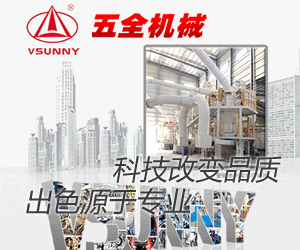Raymond Mill (Raymond Mill) is a common grinding equipment, suitable for ore, building materials, chemical industry and other fields of grinding and grinding process. The Raymond mill uses the relative motion between the grinding roller and the grinding ring to grind and break the material, and then classifies the material according to the particle size through the classification function of the analysis machine, and finally collects and extracts the required finished powder.
Basic structure:
Main structure: The main structure of Raymond mill includes the main machine, the analytical machine, the fan, the pipeline equipment and the electronic control system.
Grinding device: the main machine is equipped with a set of grinding device, generally including the main shaft, grinding roller, grinding ring and grinding knife and other parts. A certain pressure is formed between the grinding roller and the grinding ring to grind and break the material.
Grading device: The analyzer is used to control the particle size of the material and grades the material according to the size of the particle size. There is a set of impeller and screen inside the analytical machine, and the fineness of the material is controlled by adjusting the speed and air volume of the impeller.
Air duct system: Raymond Mill is equipped with fans and piping equipment for conveying materials and regulating air flow inside the mill.
How it works:
Feeding and grinding: The material enters the grinding device of Raymond Mill through the feed port and is ground and broken by the extrusion and friction of the grinding rolls and grinding rings. The grinding roller rotates under the drive of the main shaft, and the material is finely ground by the grinding knife.
Grading and discharging: After grinding, the material enters the analytical machine for grading. By adjusting the speed and air volume of the impeller, the finer particles are discharged through the screen, while the coarser particles are re-fed into the grinding device for re-grinding.
Circulating and circulating air: In order to control the temperature and humidity of the mill, Raymond mills usually use circulating air systems. The fan introduces a part of the gas into the mill, forming an air circulation, which takes away the heat and fine powder, and maintains the temperature and humidity inside the mill.
Discharge and collection: After grading, the finer material is blown into the air duct system by the wind, and is transported through the pipe to the material collection device, and finally forms the finished powder.
Adjustment and control: Raymond mill is usually equipped with an electronic control system, which can adjust and control the operating parameters of the mill. The grain size, output and quality of the product can be controlled by adjusting the feed amount, air volume, impeller speed and other parameters.
Work flow
It should be noted that the specific structure and working principle of Raymond mill may vary according to different models and manufacturers, the above content is only a general description, the specific structure and working principle of Raymond mill equipment should refer to the relevant equipment manual or consult professionals.
If you have any interest or other inquiries, please contact me on WhatsApp: 13677868426
 186
186
 0
0- 1聚氨酯不含铜、锌等有害杂质
- 2苏州天启高速混合机手册
- 3纳米石墨烯电镜检测
- 4纳米石墨粉粒度检测(复达)25-0630
- 5电池材料表征实践指南
- 6聚合物加工测试分析指南
- 7散量秤彩页
- 8无斗定量包装秤—毛重秤彩页

- 搅拌球磨——在片状银粉磨制工艺上的研究与应用
- 日本寺田(Terada)PS-1高效率低温型石舀抹茶研磨机研究
- 为什么纳米CeO2的最新研究进展值得关注?
- 为什么AFM、NC等期刊频繁报道多孔水凝胶的最新研究进展?
- 蓝宝石的10大应用
- 《JMST》顶刊揭秘:激光3D打印高强铝合金的“强韧协同”奥秘——协同晶粒细化策略
- NC、AFM等期刊报道银纳米线最新研究进展!
- 为什么ZIF-67的最新研究进展值得关注?
- 大明化学氧化铝粉在低温烧结制粉中的应用
- Development, Characterization, and Molecular Dynamics Simulation of Andrographolide Nanosuspensions Utilizing Hummer Acoustic Resonance Technology
- 苏州碳丰科技首席科学家程金生老师以本公司名义在国际上发表关于石墨烯纤维的论文《石墨烯纤维纳米复合材料的合成及氨基酸检测的分析应用》:
- 介可视·散装物料库存管理雷达全景扫描系统在料仓、堆场中的应用
- 磷酸化修饰鬼臼果多糖的制备及生物活性
- DSR论文解读:Advanced Science News 报道中科院长春应化所新型非铂催化材料研究成果
- High-throughput preparation, scale up and solidification of andrographolide nanosuspension using hummer acoustic resonance technology(纳米混悬剂制备的前瞻性技术 - 蜂鸟声共振)
- 扫描电镜优秀论文赏析|飞纳台式扫描电镜电极材料上的应用


